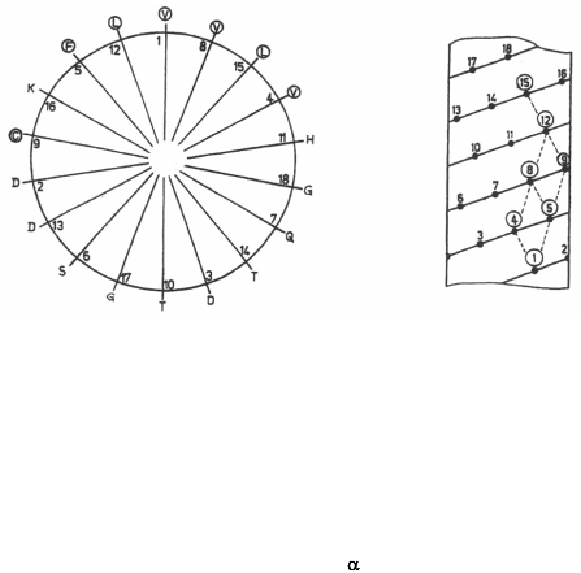Biology Reference
In-Depth Information
good predictions for the presence of -helices, not so good for -strands,
and even worse for turns.
The helical wheel method of predicting the existence of -helix (Schiffer
and Edmundsen, 1967) positions the amino acid residues in a protein along a
theoretical -helix. If there are many hydrophobic residues lining only one
surface of that -helix, it is assumed that the helix indeed exist (Fig. 6-1).
The success of this method results from the fact that in most globular
proteins, their -helices are on the surface, with one side facing the interior
of the protein, thus hydrophobic.
Figure 6-1
. The helical wheel method.
The helical wheel method has also been used to predict trans-membrane
regions of proteins. Due to the presence of a central hydrophobic layer in
membranes, the -helix should consist of hydrophobic amino acid residues.
Since the rise per amino acid residue in an
-helix is 1.5 A, a stretch of













